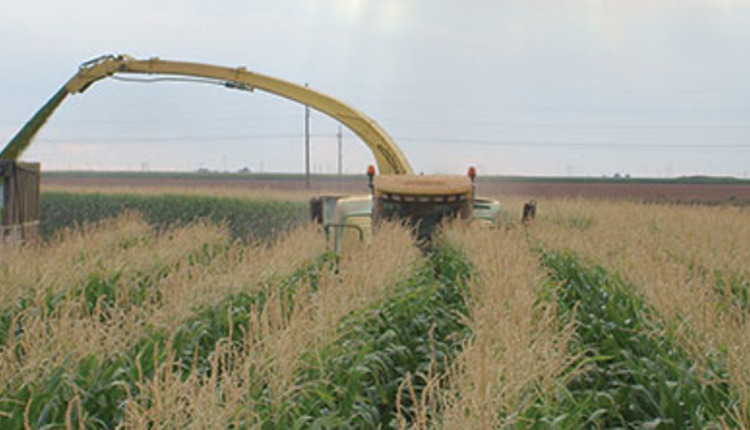president of the U.S. Custom Harvesters Inc.

By the time this column goes to print, I will already have my crew in south Georgia cutting corn silage. My team will be enjoying the 100° heat, 99 percent humidity, afternoon thunderstorms, sand roads, nasty ants, spiders, snakes and gnats — all the fun of becoming a custom harvester in the Southeast.
To get ready for the corn season, I like to imagine the path a stalk of corn takes from the front tip of the harvester head to the tip of the spout. I want to take a look at each of these parts and decide if it is ready for another season. While doing this, I also look at the driveline that is powering any of these parts that move.
For example, I start with the points on the corn head, are they cracked? Are the pivot bolts tight, worn or missing?
You can work your way back to the knives on the corn head and teeth on the gathering drums or auger. The performance of the head will determine the output of the entire harvesting operation. Simply replacing the teeth on the auger may make a huge difference on how many tons cross the scales every day.
Continue back through the crop flow, visually checking all liners, ledges, rollers, bearings, springs, grease lines, electric harnesses, and hydraulic lines. Even if you do not need to replace a part, you might find a few parts that can be stocked on your farm so you are prepared for when they are needed.
Are any gearboxes leaking? Checking the fluid level of a gearbox before you drain it for an oil change can be an easy way to help find a problem. If the oil is low, look until you find the problem. If you do not find it before harvest starts, you will find it during harvest. Seals are cheap, gears are expensive.
Engines need attention
Do you have enough hours on the engine that you need the engine serviced? We are usually asking for 110 percent of engine capacity while chopping, which means a little extra service can offer a big payback in season. I have had many choppers that significantly responded to having the intake and exhaust valves adjusted at 250 hours from new. Talk to your dealer about the possibilities of getting a trained technician to look over the engine.
It is easy to overlook the lack of power while cutting haylage, but when the cab-high corn starts to feed in and the engine is choking, you will be glad you spent the extra time checking all the boost lines and changing the fuel filters — all the fuel filters — including any prefilter screens that may be hiding in the fuel system. Again, ask the dealer for advice or maybe even get the operator’s manual out of the box below the seat and read up on the service section.
Once you have made it all the way to the spout flipper and it is all good to go, return to the owner’s manual and read the first 20 to 50 pages of the book that deals with the safe operation of the chopper. This part of the book gets overlooked by most of us but is actually the most important part.
Did you check the fire extinguishers to make sure they are fully charged? How about all the caution lights? Back up beeper and lights? What about that nasty beeper that tells us the cutter head is still turning? All of these need to work.
All of that hard, mechanical work is done, and now you are ready to harvest. WRONG! Get the entire harvesting team together, including the part-time, fill-in employees, and train them all on how you want things done. The most important part is getting through the harvest without any injuries and as few mishaps as possible.
If you are not sure where to start on this safety meeting, check with your insurance agent. All reputable companies have loss prevention agents who can help. Also, U.S. Custom Harvesters Inc. has a video set that can be purchased for less than the cost of the pizzas you will buy the crew for lunch. The safety meeting is more important than getting the chopper ready to run!
Honoring a colleague
I will close out this month with a very sad goodbye. One of my great friends in the harvesting world was killed by a drunk driver in late May. All of the Hay & Forage Grower readers should remember the California Chopper Challenge from a few years back. Dan Lamb had a constant desire to see manufactures improving choppers.
I was fortunate enough to share countless hours talking about different ideas, designs and concepts with Dan. I witnessed firsthand some ideas for improvement that came out of the Chopper Challenge that are now on machines.
We are all benefiting from Dan’s dedication to organizing the entire competition. I was always impressed that a man with so much of his own work to do would take the time to answer my questions. The harvesting family lost a great one. •
This article appeared in the August/September issue of Hay & Forage Grower on page 8.
Not a subscriber? Click to get the print magazine.

